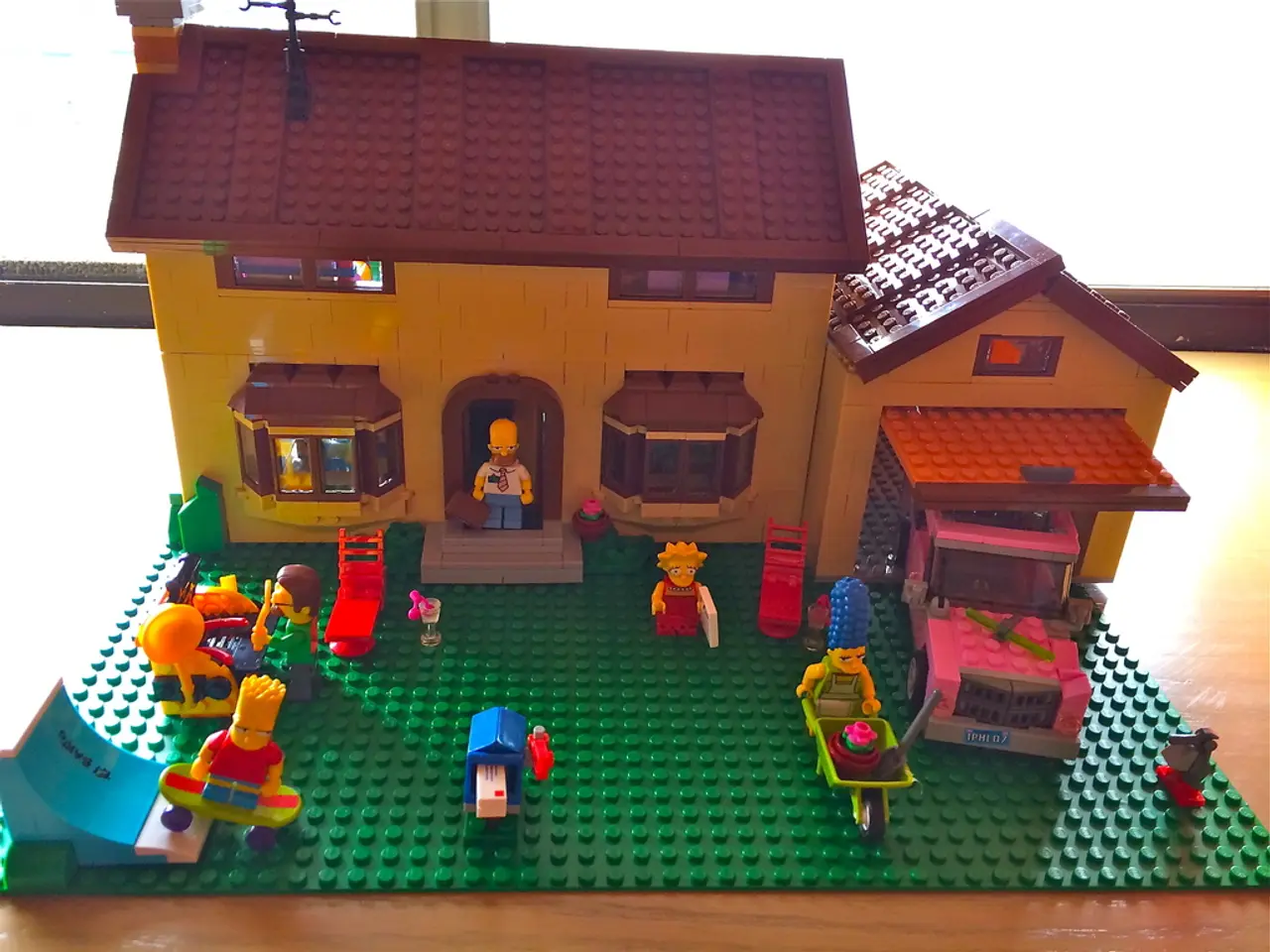Methods for Cultivating Imagination within Domestic Environments
=====================================================================
In today's rapidly changing world, fostering creativity in children has become more important than ever. Studies show that children who engage in pretend play during their preschool years are more likely to be creative and innovative [1]. This article will explore key strategies for creating a supportive and nurturing environment at home that encourages creativity in children.
Pretend play is not just a simple game; it plays a significant role in cognitive development. It boosts neural plasticity, improves memory, and activates mirror neurons [1]. Engaging in activities that bring you and your child together helps create a space where their imagination can run wild.
Nurturing creativity at home has numerous benefits for children. It helps them grow in ways that will serve them well in the future, preparing them for the changing world of education. Creativity has many forms, including painting, playing music, telling stories, or cooking [2]. Encouraging various creative expressions helps kids find what they love and grow as individuals.
Role play, in particular, is a powerful tool for fostering creativity. Through role play, children can explore different scenarios and perspectives, fostering empathy, responsibility, and problem-solving skills [3]. Role play also helps children solve problems in real life by teaching them to distinguish between what's real and what's not.
The heart of creativity is in being true to oneself, and making your home a place where everyone's unique talents are celebrated is crucial. A balanced creative space allows for some mess and clutter, giving children's imagination the space it needs to flow freely without limits. However, teaching kids to clean up is key to creating a balanced creative space, teaching them responsibility and showing creativity and cleanliness can go together [4].
Leading by creative example encourages children to be creative by showing them that everyone can be creative in many ways. Inviting kids to help with projects and having a special area for creativity in your home can help boost their creativity and grow closer as a family [5].
By integrating these approaches, you create a nurturing home environment that inspires creativity through exploration, independence, structure, and emotional support, tailored to children's developmental needs [1][2][3][4]. Exploring different creative outlets can greatly improve well-being and learning from failure increases creative potential.
References:
[1] American Psychological Association. (2020). The Importance of Play in Promoting Healthy Child Development and Maintaining Strong Parent-Child Bonds. Retrieved from https://www.apa.org/topics/play
[2] Montessori Services. (n.d.). Montessori Classroom Layout. Retrieved from https://www.montessoriservices.com/pages/classroom-layout
[3] National Association for the Education of Young Children. (2018). The Power of Play: Learning and Development in Early Childhood. Retrieved from https://www.naeyc.org/resources/topics/play
[4] Riegel, K. (2012). The Montessori Method: A Modern Approach. Schocken Books.
[5] Sylvester, D. (2018). Creativity in Early Childhood: Theory, Research, and Practice. Routledge.
- Encouraging social skills and respect for others is essential in fostering a strong parent-child relationship, as it lays the foundation for understanding and valuing differences.
- Providing children with an equal opportunity to engage in various creative activities, such as fashion-and-beauty projects or food-and-drink experiments, can help boost their self-confidence and emotional intelligence.
- A home filled with books, art supplies, and toys can serve as a springboard for imagination, nurturing a child's creativity and personal growth.
- By engaging in outdoor activities like travel, home-and-garden projects, or caring for pets, a child develops problem-solving skills and develops an appreciation for nature and the environment.
- The influence of education-and-self-development materials can help empower kids to foster their own creative ideas, especially when they see their parents prioritizing personal growth and shopping for items that support this growth.
- Choosing a car as a family can be an exciting and creative process, allowing children to learn about practicality, safety, and the importance of taking care of possessions.
- Encouraging creative exploration through pretend play during childhood can lead to a greater likelihood of success in relationships and various career paths, such as those in the arts or business, later in life.
- By promoting creativity at home, families can strengthen their relationships, not only between parent and child but also among siblings and extended family members, creating lasting memories and connections.




